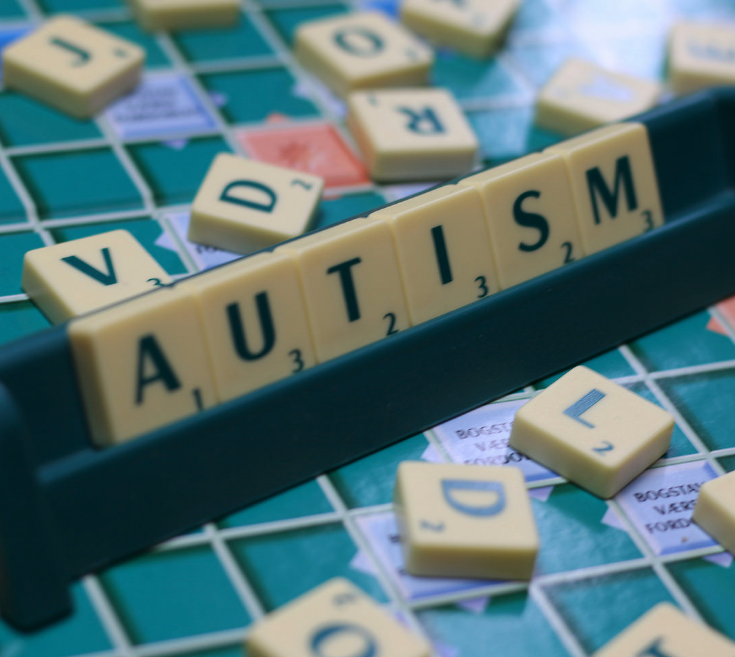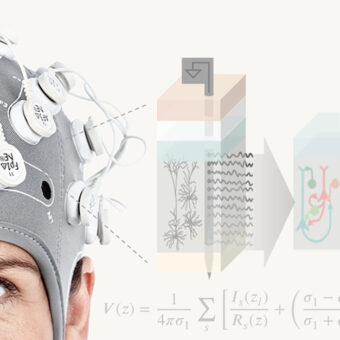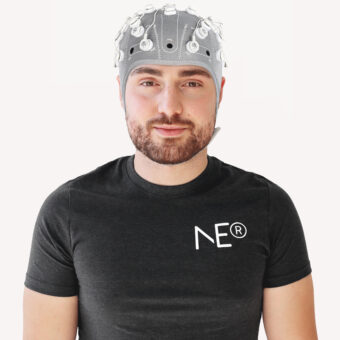Photo via PlusLexia
More than 1% people are autistic. People with Autism Spectrum Disorder (ASD) mainly present problems in social communication and interaction, and restricted and repetitive patterns of behaviour, interests or activities. Hence, children with ASD may have problems understanding gestures, spoken language, spoken metaphors, recognising own and others’ emotions, and feel overwhelmed in social situations. They also present repetitive body movements, motion with objects, ritualistic behaviours, extreme resistance to change their routine, and restricted interests or preoccupations. There are several types of autism, which is why the disorder is referred to as “spectrum”.
The causes of autism still remain unknown, and there are only very few effective and appropriate therapies. Most available therapies do not target the core symptoms of the disorder, but particular behaviours, like hyperactivity, sleep problems, or anxiety. Thus, more appropriate therapies are needed. In this blog post we try to shed some light on what is happening in the brain of an ASD person when experiencing social communication issues and when demonstrating restricted behaviours and patterns.
Figure 1. Differences between TD (healthy control group) and ASD in the IFG. Image source: Brain (2006), 129, 932–943
To begin with, the brain volume of children with ASD has been found to grow to its maximum size faster than the normal brain. Regarding the social interaction aspects of the disorder, some studies have found that children with ASD show hyper-activation in the right IFG (inferior frontal gyrus) and in the bilateral temporal regions, both related to understanding the mental states of others (Figure 1) (Wang et al., 2006). The studies concluded that the children with ASD have difficulties in identifying irony and in interpreting communicative attention of others due to these deficits. Social communication impairments were also depicted in the hypo-activation of the ACC (anterior cingulate cortex), which is related both to cognitive and to emotional processing. In general, the social brain area that includes the superior temporal sulcus (STS) and its surrounding areas seems to be affected by ASD (e.g., Figure 2). A study has demonstrated hypo-activity with ASD in the STS and in the posterior cingulate cortex (PCC), related to social behaviour and to the visuomotor sequence learning (Sharer et al., 2015). Visuomotor sequence learning refers to meaningful speech and mentalizing, and the impact for ASD is related to the particular way of learning visuomotor sequences for this type of patients, closely associated with lack in communication and socialization skills.
Figure 2. Differences between ASD and TD due to restricted and repetitive patterns of behaviour (image source: Journal of Child Neurology, (2015), 1-10)
Apart from the social interactions, the symptoms of restricted and repetitive patterns of behaviour are a major diagnostic characteristic, and are related to the functions of the striatum and the general region of basal ganglia (Lewis et al., 2009). The striatum is an important region responsible for the motor and reward system. Specifically, it coordinates decision-making, planning, motor actions, and reward perception. The latter refers to a desire for a reward, which is associated with positive emotions. Mosconi et al. reported alterations in the frontal striatal systems of ASD patients compared to healthy controls (Mosconi et al., 2009), finding that implies decision-making, planning, and reward deficits for ASD patients.
Although there is still not a panacea for treating ASD, recent reviews present the effects of some treatment interventions for ASD in the brain (Stavropoulos 2017; Calderoni et al., 2016), highlighting the benefits of the brain plasticity. However, in addition to the core features of the disorder, many people with ASD also suffer from epilepsy, anxiety or depression, and life expectancy in some cases does not exceed 30 years. There is, thus, need to create appropriate tools to predict tendencies to these secondary features of the disorder, as well as ways of dealing with them. In Starlab and Neuroelectrics we try to shed more light into the mechanisms of ASD and provide new therapy solutions participating in two different projects, namely STIPED and AIMS-2-TRIALS.
References:
1). Lewis, M., & Kim, S. J. (2009). The pathophysiology of restricted repetitive behavior. Journal of neurodevelopmental disorders, 1(2), 114.
2). Mosconi, M. W., Kay, M., D’cruz, A. M., Seidenfeld, A., Guter, S., Stanford, L. D., & Sweeney, J. A. (2009). Impaired inhibitory control is associated with higher-order repetitive behaviors in autism spectrum disorders. Psychological medicine, 39(9), 1559-1566.
3) Sharer, E., Crocetti, D., Muschelli, J., Barber, A. D., Nebel, M. B., Caffo, B. S., … & Mostofsky, S. H. (2015). Neural correlates of visuomotor learning in autism. Journal of child neurology, 30(14), 1877-1886.
4) Calderoni, S., Billeci, L., Narzisi, A., Brambilla, P., Retico, A., & Muratori, F. (2016). Rehabilitative interventions and brain plasticity in autism spectrum disorders: Focus on MRI-based studies. Frontiers in Neuroscience, 10, 139.
5) Stavropoulos, K. K. M. (2017). Using neuroscience as an outcome measure for behavioral interventions in Autism spectrum disorders (ASD): A review. Research in Autism Spectrum Disorders, 35, 62-73.
6) Wang, A. T., Lee, S. S., Sigman, M., & Dapretto, M. (2006). Neural basis of irony comprehension in children with autism: the role of prosody and context. Brain, 129(4), 932-943.





